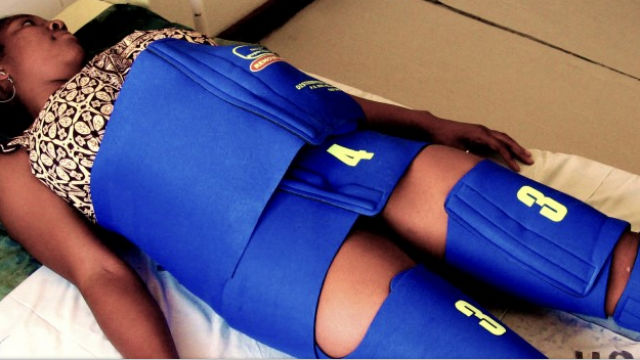SUMMARY
This is AI generated summarization, which may have errors. For context, always refer to the full article.

KUALA LUMPUR, Malaysia – Contractions becoming more and more intense as their intervals become shorter and shorter is one of the many signs of labor.
For many pregnant women, this would mean going to a hospital to prepare for delivery. However, for a large portion of women—especially those in the developing world—receiving medical attention would necessitate walking a great distance or being carried through makeshift ambulance like a pushcart or hammock to reach a rural clinic that most likely lacks supplies, equipment or skilled birth attendants to diagnose and treat medical complications such as post partum hemorrhage.
According to US-based reproductive health think tank Guttmacher Institute, only 64 percent of women who give birth deliver in a health facility. This proportion varies greatly by country, with the number being lower than 50 percent in Eastern and Western Africa and 99 percent in Eastern Asia.
In 2010, the Guttmacher Institute recorded 284,000 women in developing countries who died from complications related to pregnancy and childbirth—which are largely preventable.
Postpartum hemorrhage or excessive bleeding after childbirth is the leading cause of maternal death worldwide.
Delivering in a healthcare facility under the supervision of a skilled birth attendant and with emergency equipment on hand is key to preventing maternal deaths. However, according to data from 22 Demographic and Health Surveys (NDHS) there are two major reasons why women do not deliver in a healthcare facility: cost and distance/lack of transportation.
“Maternal mortality [dying from childbirth related complications] tracks the contours of inequity between countries. A major cause of maternal mortality is postpartum hemorrhage; in the developed worlds, this is no longer heard off, said Kate Gilmore, deputy executive director of the United Nations Population Fund (UNFPA).
“Services must be accessible, available and affordable. But for many people this is not possible. If there is hemorrhage, a woman only has hours (to receive proper medical care),” continued Gilmore.
Leveling inequities
The UNFPA in partnership with global health experts Parthfinder International, University of California San Francisco (UCSF) Safe Motherhood Program, the John D. and Catherine T. MacArthur Foundation and PATH have come up with a garment to treat postpartum hemorrhage.
The non-pneumatic anti-shock garment (NASG) is designed as a temporary measure to buy women suffering from postpartum hemorrhage time while waiting to be transferred to an appropriate health care facility.
The NASG, a neoprene and Velcro half suit, evolved from a suit originally developed by NASA and is designed to be strapped onto a woman’s legs and abdomen (from the ankle to the navel).
The NASG applies pressure to the uterus, compresses the area it is wrapped around and closes the blood vessels.
“The blood is then shunted to the heart, lung and brain which are the oxygen dependent organs and reverses the shock,” explained Professor Suellen Miller of the UCSF.
According to UCSF, use of the NASG while waiting for a transfer to a hospital can save a woman’s life. In studies conducted by UCSF in Nigeria, Egypt, Zambia, Zimbabwe and India between 2004 and 2012, there was a 50 percent decrease of maternal mortality when the NASG was used.

Clinical trials and cost reduction initiatives
The UCSF has led the research and clinical trials for the use of the NASG since 2002. In 2007, the various groups involved in the research, design and production of the NASG began incorporating its use as part of a continuum of care package of maternal health care services in Nigeria, India, Peru, Tanzania, Burundi and Bangladesh.
“Working in parts of the world where distance is the difference between life and death demands solutions that can begin in the community or in the home, and keep women safe at every stage,” said Purnima Mane, president and CEO of Pathfinder International, a non-profit family planning and reproductive health organization.
The NASG is estimate to cost about USD70 each, but it may be used at least 40 times after washing. Currently, PATH is conducting research on how to lower the cost of production of the NASG. PATH is an international nonprofit organization that leads innovative solutions to global health problems.
Collaborations between PATH and manufacturers in India and Hong Kong have resulted in a four-time reduction of the production cost of the NASG, without compromising its quality.
“Postpartum hemorrhage is a killer, but it’s also one of the few obstetric complications with proven, effective interventions like the non-pneumatic anti-shock garment,” said Amie Baston, PATH chief strategy officer. – Rappler.com
Add a comment
How does this make you feel?
There are no comments yet. Add your comment to start the conversation.